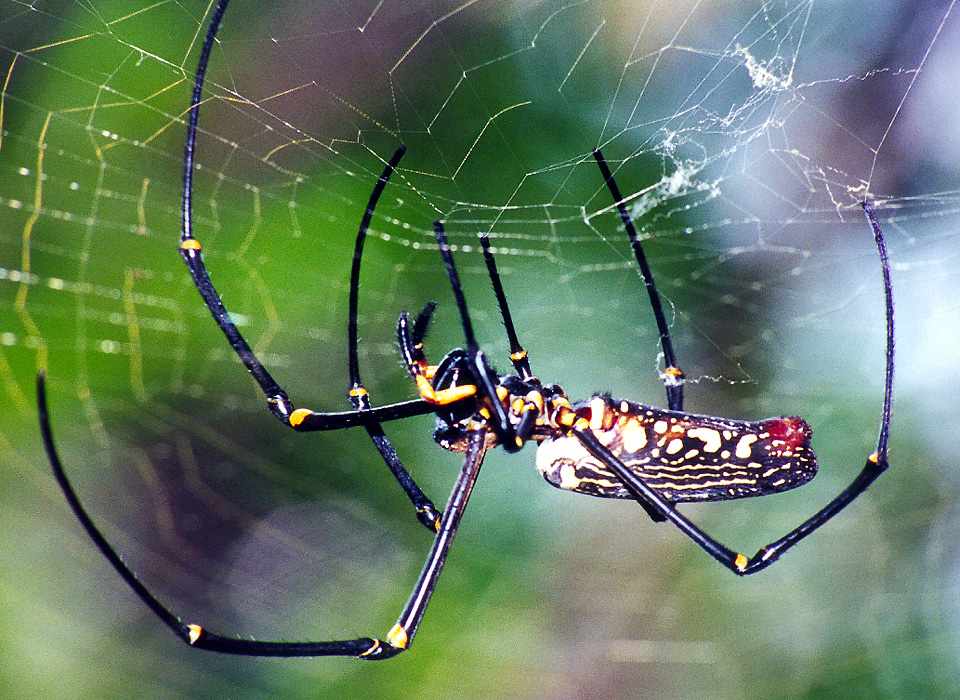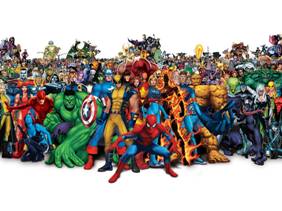Camouflage:
In nature there is a lot of pressure for animals of all kinds to blend into their environment or hide their shape. For prey, they need to be able to hide from predators and predators need to be able to sneak up on prey to be able to catch their food.
Natural camouflage is one method animals use to make this possible. There are many ways of doing this. Being able to blend into the environment is one way and disguising itself as something uninteresting or dangerous is another.
Animals have a permanent co-evolution of the sensory abilities which is beneficial to be able to detect animals in camouflage, and the cryptic characteristics of the concealing species. Different species of predator-prey have more or less pronounced abilities of sensory.
Some ani
 mals will attach different materials to their body for concealment like algae, dirt, leaves, etc. For example, a decorator crab literally attaches algae or anything that is laying around in its environment to conceal itself.
mals will attach different materials to their body for concealment like algae, dirt, leaves, etc. For example, a decorator crab literally attaches algae or anything that is laying around in its environment to conceal itself.
A few creatures can change color to changing environments, either rapidly or seasonally depending on the species. For example, a chameleon can change its color rapidly do conceal itself if it changes environments or the snowshoe hare changes grows white hair during the winter as a winter coat and as concealment in the snow. Some aquatic animals go to drastic me asures by covering their sent that might attract predators.
asures by covering their sent that might attract predators.
Some group species use similar patterns to make it difficult to find a single animal in the group. For example, the reflective scales on a fish or the stripes on a zebra can confuse prey on where one animal stops and another begins if the herd stays together.
Cryptic coloration is the most common form of camouflage and is found in most species. The simplest way for an animal to blend in is to be the same color as its surroundings. Examples, are deer, squirrels, or moles are colored to match trees or dirt. Sharks use a type of counter shading and are blue skinned on top and have white underbellies so its hard for them to be detected from above or below. More complex match coloring to their environment are on flounder, moths, and frogs.
The type of camouflage a species will depend on the environment it lives in, the behavior of the animal, and if the animal is hunted by any other animal. Animals produce colors in two different ways. Biochromes are natural microscopic pigments that absorb certain wavelengths of light and reflect others. Other way an animal gets its coloring is microscopic physical structures that act like prisms to reflect and scatter light to produce a color different that the color of the skin. Overall camouflage is very important in nature and a lot of factors effect exactly how or why a certain species uses camouflage.
Mimicry is when a certain species has evolved to share common outward characteristics with another species or the same species, including auto mimicry which is when one part of the animal looks like another part. The distinction between mimicry and camouflage is the model of camouflage is not another organism but an environment while in mimicry the model is another organism.
The most commonly known kind of mimicry is visual, but other types are smell or signal mimicry. Signal mimicry is used to mess with the receiver by sending miss leading information. Mimics can have multiple shapes or models during their life cycle or they might just be polymorphic where different individual animals mimic different things.
Defensive mimicry is when an organism is able to avoid a would be predator or trick a predator into mistaking them for something else. Four types of this are batesian mimicry, where a harmless organism acts harmful. Mullerian mimicry, where two harmful species share similar characteristics, Mertensian mimicry, where a deadly organism acts less harmful but lesson teaching organism, and Vavilovian mimicry, where weeds resemble crops.
Aggressive mimicry is when predators share the same looks as a harm
 less species which allows them to avoid detection by their prey. An example of this is the Golden Orb Weaver which spins a conspicuous golden colored web in well lighted areas which the yellow pigment in the web confuses bees with the color that is the same as many nectar bearing flowers.
less species which allows them to avoid detection by their prey. An example of this is the Golden Orb Weaver which spins a conspicuous golden colored web in well lighted areas which the yellow pigment in the web confuses bees with the color that is the same as many nectar bearing flowers.Another form of mimicry is based on patterns. Some species of spiders put patters such as zigzags in their web. These reflect ultraviolet light and mimics the pattern in many flowers known as nectar guides. The spiders change their web day to day to make sure the bee doesn’t remember the web patterns.
Another example of mimicry is where males are lured towards what would seem to be a sexually receptive female. For example, female fireflies emit the same light signals that females of the species Photinus use as a mating signal. Male fireflies from different species are attracted to this “light show” and are usually caught and eaten.
Another technique is where a species uses a lure or some sort to lure prey close enough to be captured. An example of thi
 s is an angler fish which lives deep down in the ocean that uses a lure attached to his head that it dances out in front of its face until prey gets close enough to snap down on.
s is an angler fish which lives deep down in the ocean that uses a lure attached to his head that it dances out in front of its face until prey gets close enough to snap down on.Overall mimicry is very different than camouflage. They are both used to avoid being eaten or make it easier to eat, but the concept of mimicry is to look like something else to fool predators or prey while camouflage is used to hide from predators or prey.
Sites:

No comments:
Post a Comment